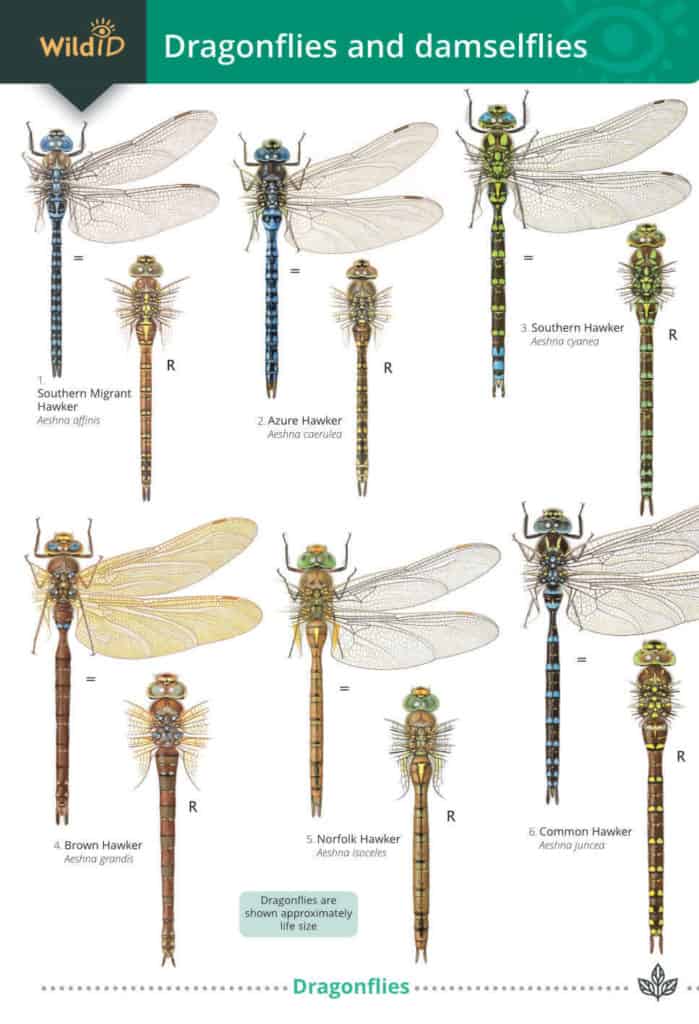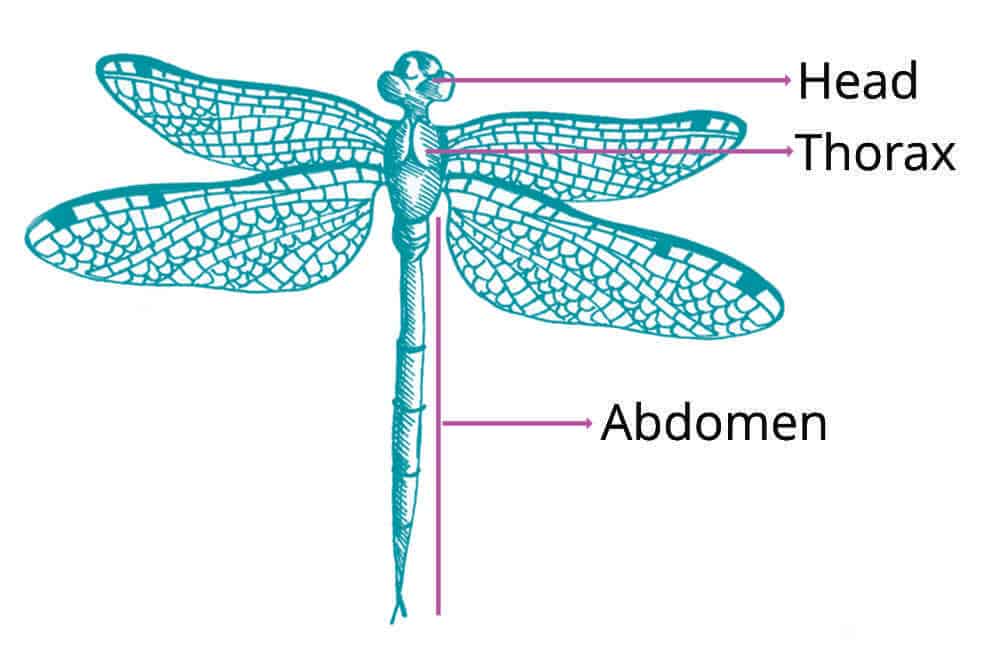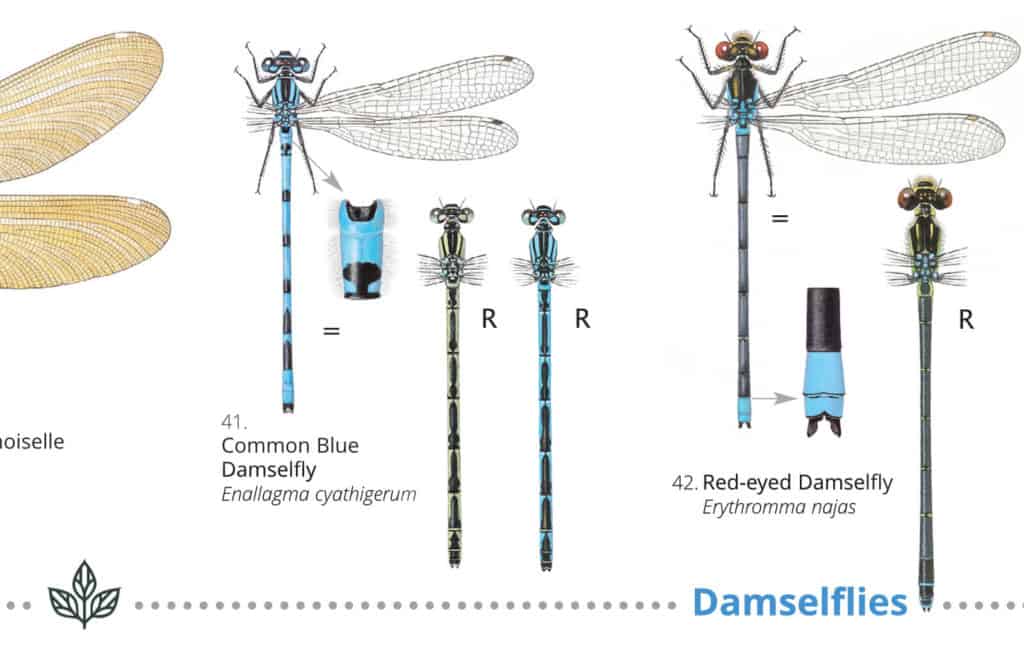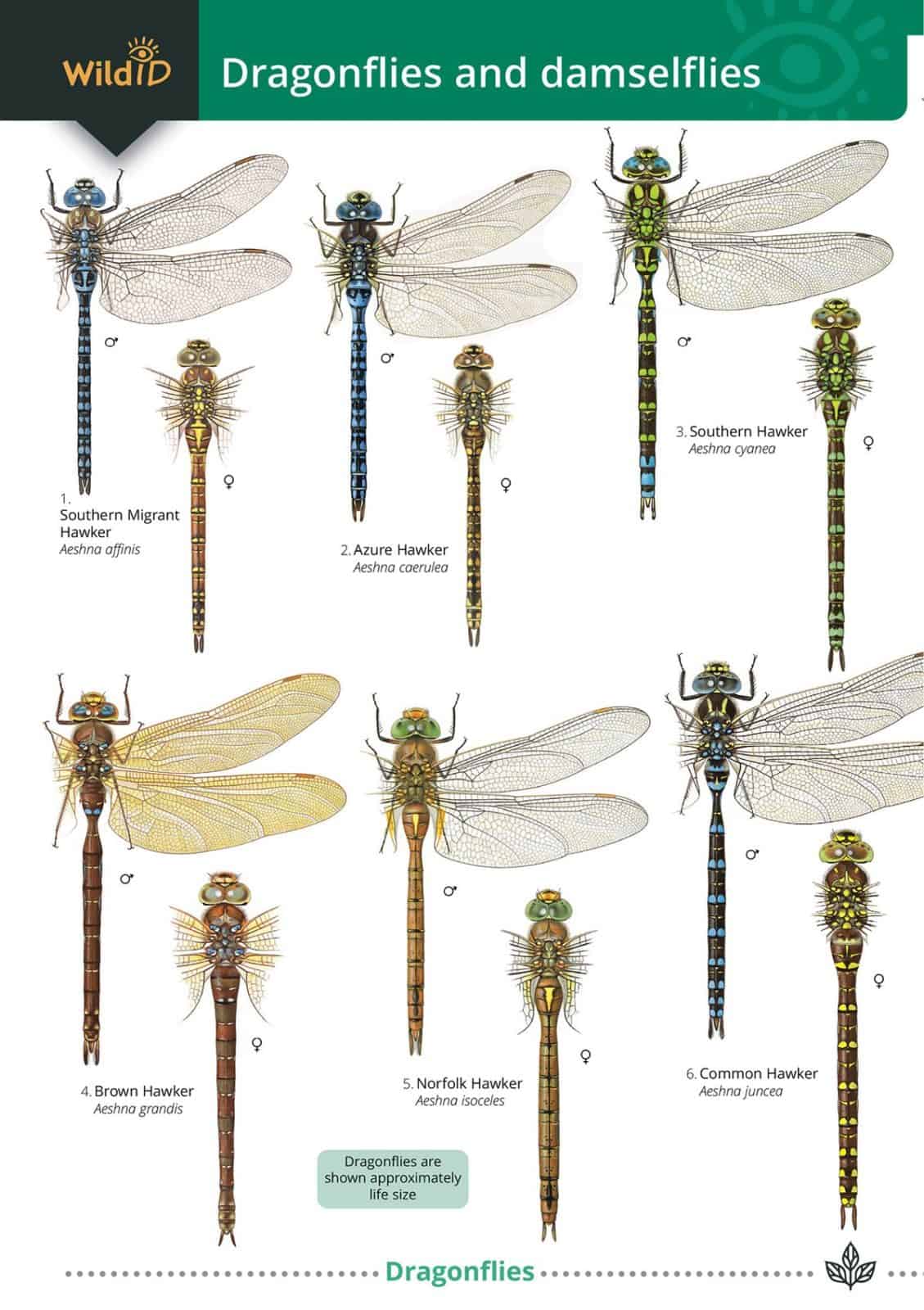Steve Docker joined the Field Studies Council Publications Unit in January 2023. Here he provides a sneak preview of the new WildID fold-out guide to dragonflies and damselflies.

It won’t be long now before the first dragonflies and damselflies begin to emerge at ponds, lakes and slow-flowing rivers. May to September are usually the better months. So, why not take the new edition of the WildID guide to dragonflies and damselflies and see what you can find. Don’t forget to pack some close focusing binoculars, if you have them, for good close-up views.
This is the latest identification resource to join the extensive collection of Field Studies Council guides. It is written by Rebecca Farley-Brown and Alice Broader and beautifully illustrated by Richard Lewington.
What’s in the new guide
As Resource Development Officer at Field Studies Council I am fortunate in that I get the opportunity to preview publications before general release. Practical and attractive, this pictorial guide covers the dragonfly and damselfly species of Britain and Ireland. It is packed with handy information and eye-catching paintings, with the insects shown from above plus close-ups of important characters. Supporting text for each species includes where and when to search for them plus their conservation status.

The guide also provides helpful details. Dragonflies and damselflies are insects, with two pairs of wings and three pairs of legs. They have three major body divisions, a head, a thorax (in the middle) and an abdomen.
In this group the abdomen is long and looks like a tail. Indeed, some species, such as the Black-tailed skimmer Orthetrum cancellatum and Blue-tailed damselfly Ischnura elegans, have the word ‘tail’ as part of their name. The abdomen is made up of similar segments. The 2nd abdominal segment (see picture) is especially important for distinguishing the blue damselfly species.
Learning about dragonflies: my own journey

I started to learn about insects with some introductory FSC weekend courses, and then I wanted to know more about this fascinating group. So, I joined a dragonfly and damselfly identification course at Flatford Mill in Suffolk which taught me so much more.
Famous as the site of John Constable’s painting ‘The Haywain’, it is my favourite FSC field centre. I will never forget my stay in Willy Lott’s house, next door to the centre and with the idiosyncrasies of a dwelling built in the 1500s! During a blend of classroom sessions and field trips, I encountered many new things. I remember, for example, the delight of discovering ‘shoulder’ stripes. Technically known as antehumeral stripes, they occur on the sides of the thorax of some species. Since they vary in thickness, colour and whether they are complete or broken, they are often an important identification feature. It is amazing what you can see when you have been shown the fine details. Residential courses like this are an important stepping stone to acquiring a greater level of knowledge.
Find out more
Want to learn more about dragonflies and damselflies? Check out the wide range of FSC courses and the British Dragonfly Society. Also, why not visit wildlife illustrator Richard Lewington’s fascinating website.
To help us all appreciate and enjoy biodiversity and better understand the changing state of nature the Field Studies Council produces a wide range of high quality identification resources. In particular the WildID fold-out guides and Aids to Identification in Difficult Groups of Animals & Plants (AIDGAP).
The WildID guide to dragonflies & damselflies (OP207) ISBN: 978 1 90881 983 3 is available now. Order online by 19 March 2023 for a special earlybird 25% discount.

